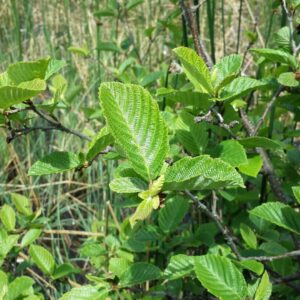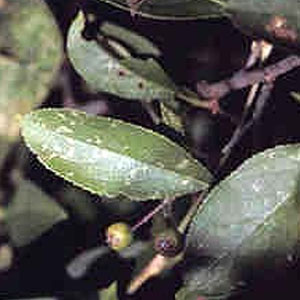Deciduous Shrubs
With their striking beauty, vibrant colors, and easy maintenance regimen, deciduous shrubs are one of the most popular additions for property owners looking to round out their landscape. Deciduous shrubs are characterized by their lifecycle of full, vivid blooms and barren hibernation as the growing season wanes.
Unlike a majority of their conifer counterparts, deciduous plants completely lose their foliage for part of every year. At the end of their growing cycle, they begin to shed their leaves and (depending on the type of shrub) any flowers that have bloomed or fruit that has ripened. In non-tropical climates, the end of the growing season is usually at the onset of winter. In tropical climates, it is the end of the rainy season. The period of the year during which deciduous shrubs do not grow is referred to as their dormant season.
Deciduous shrubs have thin, broad leaves that are green during times of growth and then transform into bright, beautiful colors as they approach dormancy. This distinguishing change in color is a result of the leaves trying to conserve water as they go dormant. While dormant, the shrubs are bare. The colorful, dynamic growth cycle of deciduous shrubs is what draws most people to them as a means of infusing fresh life and visual interest throughout their landscape.
Information
Early Stages of Growth for Deciduous Shrubs
It does take some time for deciduous shrubs to become fully established, but once they do, they can grow to be several feet tall and fill out densely. Generally, the first year is when they “sleep” and build their root system in the soil. In their second year, you should see the beginnings of new growth. Once your shrubs reach their third year, new growth is typically abundant and the plant is now fully established and requires less maintenance.
Fall is the best time to add new deciduous shrubs to your landscape, as this gives them time to get acclimated to the environment before the hot and dry season.
How to Care for Your New Deciduous Shrubs
Like most plant life, deciduous shrubs will require more care and attention in their early stages of growth as they becoming established on your landscape. Young shrubs should be watered regularly throughout the first year (about once per week) with deep soakings to promote deep root growth. Once established, a deciduous shrub need only receive one deep soaking per week during dry spells.
Do not fertilize your freshly-planted shrubs, as this can lead to weak growth and frail branches. Instead, apply a 2-4-inch layer of mulch around the roots to help preserve moisture, deliver nutrients, protect the roots, and control weed growth.
Once your shrubs have taken root, you can apply a light layer of fertilizer in the late fall or early spring to maximize the growth of vegetation and flower buds—if you fertilize in summer, a new growth may begin and not survive the winter. After your shrubs have reached your preferred size or full growth, you should reduce fertilizer use or eliminate it entirely.
Ongoing Care for Deciduous Shrubs
Although once established deciduous shrubs do not require frequent watering or fertilizing, regular pruning is essential for their continued health and maintenance. Pruning removes the dying and diseased parts of your shrubs to improve their color, increase flower and fruit growth, maintain shape, and promote dense growth at the base.
When you first plant deciduous shrubs, they should only need light pruning to remove broken or conflicting branches. As they continue to grow and become established, most shrubs will need to be pruned during the dormant season, before new growth begins. If you have a spring-blooming shrub, it should be pruned just after blooming to maximize flower production.
The most effective way to prune deciduous shrubs is to focus on thinning them out, rather than cutting them back. Start by removing the oldest and tallest branches at the main stem, to help stimulate fresh growth and avoid a bare base and dense top (which occurs when these old, far-reaching branches block the light from reaching the lower part of the shrub).
You can also prune to control the direction of growth and overall shape of your shrubs. Simply remove branches growing in directions opposite of what you want just above the bud or at the point of attachment to another growing branch. The best pruning methods will vary based on the type of shrub you’re caring for, so be sure to research the best approach for your specific species.
Benefits of Planting Deciduous Shrubs on Your Property
With proper care, deciduous shrubs can grow and be maintained on your landscape for as long as 10-15 years. Their long life expectancy is just one of the many reasons home and business owners love having shrubs on their property. Deciduous shrubs are a popular low-maintenance option for quickly enhancing the look of your landscape. Their color transformations offer a unique aesthetic value in every season with minimal effort on your part, which in turn increases the value of your property.
Aside from their decorative benefits, shrubs also offer practical advantages to your landscape and the environment as a whole. Because they can grow to be several feet tall (six feet is typically the cap for a shrub before it is considered a tree), deciduous shrubs are a great way to shade your home, yard, and other heat-sensitive plants on your property. If you plant them strategically to block excessive sunlight from your doors and windows, you can increase privacy and lower your energy bills simultaneously.
Planting shrubs also creates new habitats for area wildlife, particularly birds seeking food and shelter and pollinating insects. The bright colors of many of the flowers and leaves on deciduous shrubs make them highly visible to insects, increasing pollination in the growing season. In the dormant season, the absence of leaves helps facilitate wind pollination. Deciduous shrubs also improve the air quality around your home, as they filter pollutants and dust. Even more, they reduce soil erosion and water runoff on your landscape, keeping it healthier and helping to conserve your water supply.































